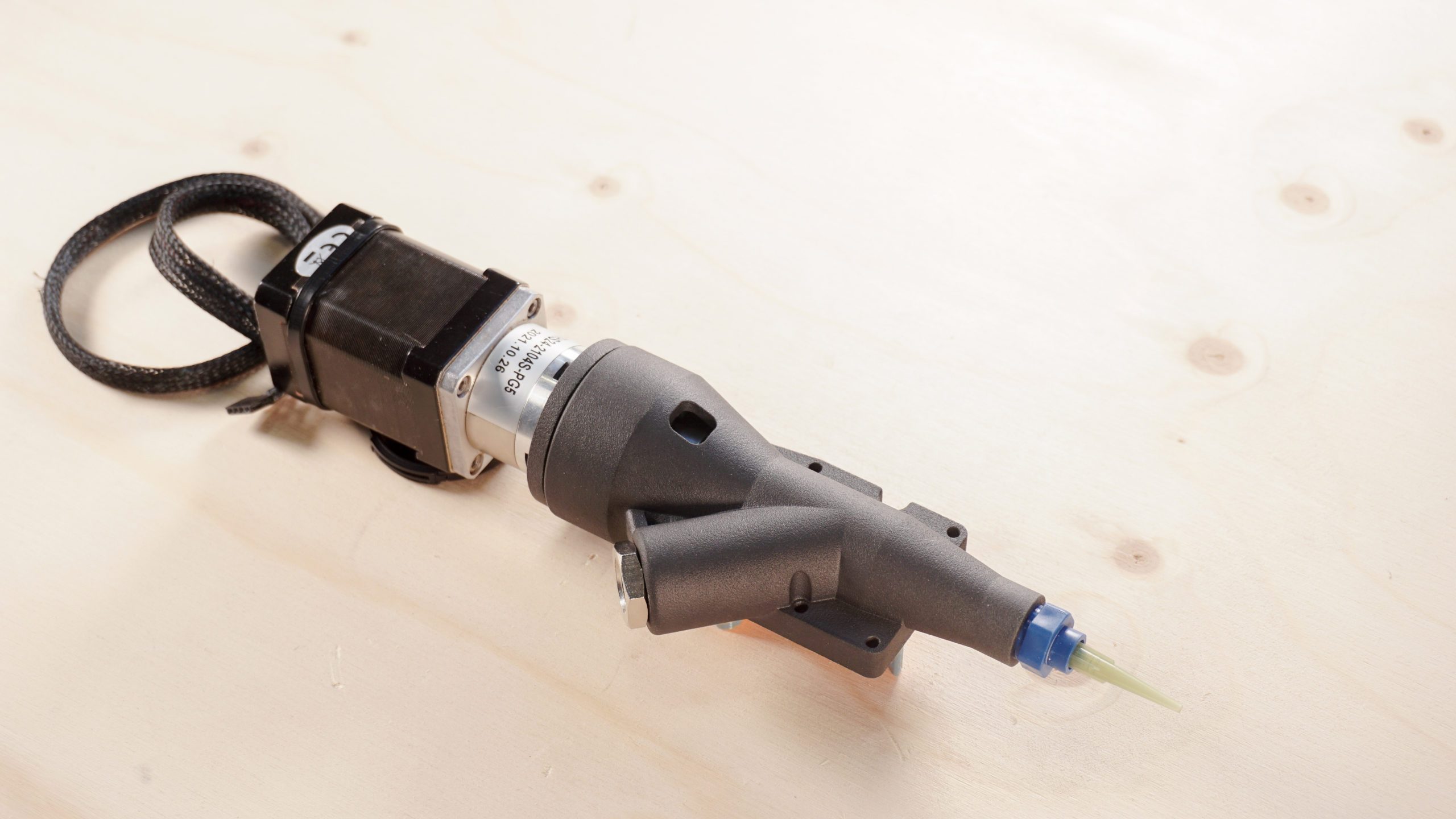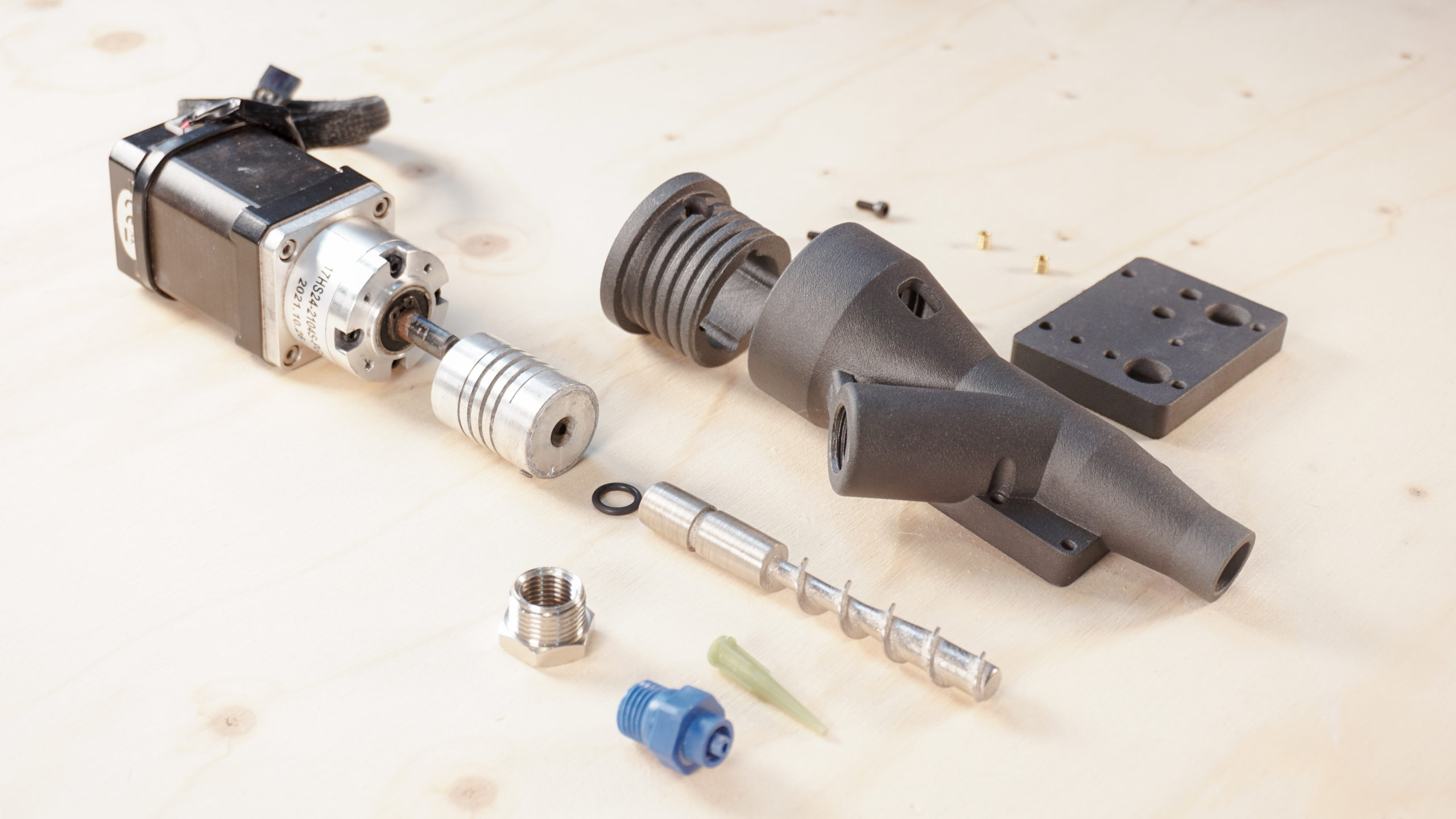Eduardo Chamorro Martin

Useful information
- Team members
- Country
- —
- Keywords
- -
Detailed Description
Low cost, easy acces, open source 3D bio-material printing toolkit, completely replicable in any standart 3d printing machine. This kit is designed for educational contexts to shift STEM education and fabrication classes from plastic based production to sustainable and local material sources usage.
Project Details
- Does your design take social and cultural challenges and human wellbeing into consideration?
The project recognizes that 3D printing with paste-like biomaterials or low-ecological-footprint ceramics can often be inaccessible due to the high cost of specific hardware. To address this barrier, the project introduces a DIY modification toolkit that is compatible with the majority of low-cost 3D printers already available in the market. By offering this toolkit, the project seeks to democratize and make this type of technology accessible to a wider audience, inviting collaboration and participation from individuals who may not have had previous opportunities to engage with such technologies.
Through collaborative and accesible design practices, the project encourages the active involvement of citizens, fostering a sense of ownership and shared responsibility. By allowing them to modify and take part in alternative production methods, from the technological point of view, to the material exploration, as it allows them to start producing and researching on their owm material recipes in diverse design ecosystem where different perspectives and expertise converge to create innovative solutions.
- Does your design support sustainable production, embodying circular or regenerative design practices?
The project commences with the fundamental goal of minimizing the total number of parts required, harnessing the widespread availability of commonly used 3D printers found in the market. These printers are not only accessible but are also widely embraced by hobbyist, educational, and professional communities. By utilizing these existing resources, the project promotes inclusivity and enables individuals from various backgrounds to engage with the design process. Rather than simply replacing, devaluing existing systems or creating out the box completely new ones, the project aspires to renew and restore actual in use 3d printing equipments and update them. It goes beyond conventional practices by offering the ability to transition from using standard petroleum-based plastics to renewable sources, such as bio-based materials and natural elements like ceramics, clay, and earth.
By embracing these principles, the project recognizes the importance of working in harmony with the systems we are a part of. It seeks to restore and regenerate these systems, placing an emphasis on environmental consciousness, circular economy principles, and the utilization of renewable resources. Through this approach, the project not only contributes to a more sustainable future but also encourages others to adopt similar practices, creating a positive impact on the design and making community as a whole.
- Does your design use principles of distribution and open source?
The design embraces a fully open-source approach, embodying the mentality and approach of designers to share and make their design processes transparent, replicable, and accessible. This includes providing all the necessary production files, work-in-progress (W.I.P) files, bill of materials, video recordings, images, assembly plans, and user guides. Every aspect of the design is made available to the community.
Furthermore, the manufacturing of the parts has been strategically designed to minimize the reliance on specific hardware, reducing the total number of unique components needed. Most of the parts can be easily manufactured using standard 3D FDM printers, enhancing accessibility and allowing for local production.
To ensure seamless collaboration and usability, the accompanying software is compatible with the kit and maintained collaboratively as an open-source project. The chosen software, such as CURA, provides a user-friendly interface designed to cater to a wide age range, including a target group of users under the age of 14.
This commitment to openness, collaboration, and accessibility demonstrates the project's alignment with the principles of distributed design, empowering individuals to engage with and contribute to the design process.
- Does your design promote awareness of responsible design and consumption?
By incorporating ecosystemic thinking, the project aims to improve the health of both social and environmental systems. It acknowledges that design decisions have ripple effects that extend beyond the immediate user or product. Thus, the project considers the long-term impacts on communities, ecosystems, and society as a whole. Through collaborative and participatory approaches, the project engages with stakeholders from diverse backgrounds to ensure that the design solutions address the specific needs and challenges of the ecosystem in which they will be implemented. It seeks to create a positive feedback loop, where the design interventions contribute to the resilience and well-being of the social and environmental systems they are embedded in.
Images


